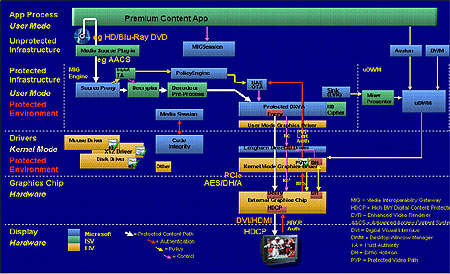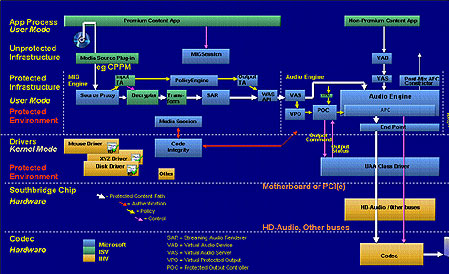Protected Video Path - PVP-UAB - User Accessible Bus is the second aspect of video
control in Microsoft's OCMP suite. It is intended to ensure that information
passing through the system bus cannot be 'snooped' or otherwise copied at the
hardware level by encrypting all 'premium content' media data with a simplified
form of 128-bit AES encryption.

In order to be compliant with PVP-UAB, graphics cards must incorporate both a
unique identifier (which is used in the encryption/decryption process) and a
hardware decryption engine to decrypt the 'premium' data as it is received from
the system bus.
Protected User-Mode Audio - PUMA - is Microsoft's projected mechanism for protecting
audio media from the same copying risks that the PVP features cover for
video. License based DRM (Digital Rights Management) systems used by
online music vendors have proven to be quite effective at managing the use of
digital music files (for better or worse), but they do nothing to prevent these
files from being digitally copied in a form which separates them from their
license.

PUMA will combine the interface disabling and quality reduction abilities of
PVP-OPM with a 'no-fly' list of restricted software. Under Vista, audio is
run in a separate user process, removed from the system kernel operations; audio
applications and hardware may need a certificate of approval before they can
handle audio under PUMA.
